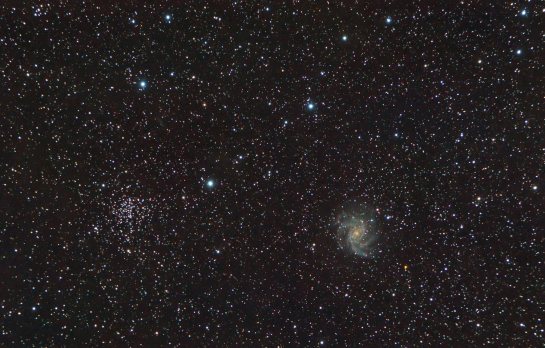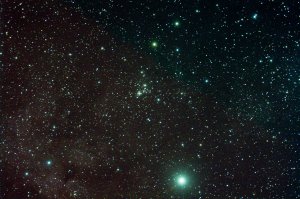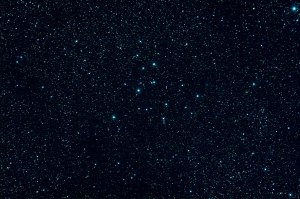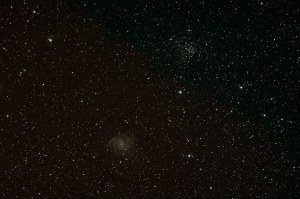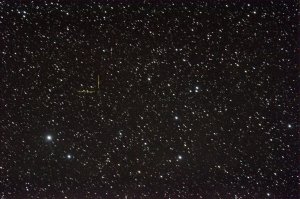NGC6946 is known as “The Fireworks Galaxy”, probably because of the distinct array of colours found within, from the deep yellows of the dying old stars at its centre to the hot blue clusters of younger stars in its outer arms. It presented almost at zenith just after the onset of astronomical full darkness last week, so I set up in my reasonably dark lay-by on the A591 and spent the whole evening – until about midnight – imaging this one target. Immediately next to the galaxy, from our point of view, is NGC6939, an open star cluster that lies within our own galaxy.
The star cluster is about 5,000 light years away, and the Fireworks galaxy is about 22 million light years away. That’s still difficult to grasp, looking at them together in the photo. It’s like snapping Kendal Castle from my bedroom window and glimpsing the Taj Mahal in the background. Crazy perspective.
Visually, the galaxy is very small, only about 10 arc minutes (one third of the Moon) in diameter. At magnitude 9.6, it is well below naked eye visibility. I guess I would have liked better quality from the image, but the local conditions were not helpful that night – light, humidity and an unfortunate number of cars driving by on full headlights. There’s another obstruction, which is that this galaxy is in line with the plane of our galaxy, so the photo is taken through the permanent clouds of interstellar dust at the edge of the Milky Way.
